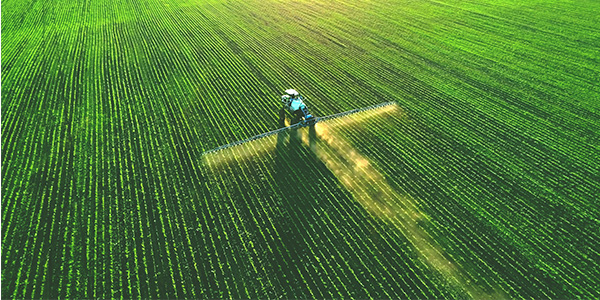AGRONOMICSUPPORT
YOU CAN TAKETO THE FIELD
Manage Micronutrients for Higher Corn Yields
While macronutrients like nitrogen, phosphorus, and potassium often take center stage, LG Seeds Agronomist Shane Irlbeck reminds growers not to overlook the critical role of micronutrients in achieving top-end corn yields.
“With the longer emergence period due to cooler and wet conditions, it’s likely we’ll see more deficiencies showing up in the coming weeks,” Irlbeck says. “While we can’t control nature, we can take steps to help ensure crops have the best possible start.”
Micronutrients Matter
Micronutrients are needed in small amounts, but their impact is anything but minor. These elements, including zinc, manganese, boron, copper, iron, molybdenum, and chlorine, are essential for plant development, disease resistance, and overall productivity.
Each one plays a specific role:
- Zinc supports cell division and elongation.
- Manganese aids in photosynthesis and chlorophyll production.
- Boron is vital for reproductive growth and pollination.
Without proper management, deficiencies can quietly erode your yield potential. For a broader view, explore the importance of micronutrients in corn production.
Soil Testing and Tissue Analysis
Deficiency symptoms often first appear on the youngest leaves or newest plant tissues right when plants are transitioning from seed energy to root function. That’s when testing becomes your best diagnostic tool.
“Even if your soil has enough nutrients, they may not be making it into the plant,” Irlbeck says. “That’s why plant tissue analysis, in addition to soil testing, is so valuable.”
- Soil tests give you a pre-season nutrient baseline.
- Tissue samples show what the plant is actually absorbing.
Compare the two to uncover uptake issues vs. true deficiencies and refine your in-season management strategy.
Managing Soil pH and Drainage for Micronutrient Uptake
Soil pH directly influences micronutrient availability. For corn, aim for a soil pH between 6.5 and 6.8.
“If your pH is too low, especially in more acidic soils, deficiencies become more common,” Irlbeck explains. “Lime applications can help correct that.” On the other hand, many Midwestern fields have high pH due to poor drainage and excess salts. In those cases, tile drainage may help improve root zone conditions.
Oxygen levels are just as important. Poorly drained soils from a wet spring can lead to surface crusting and waterlogged root zones conditions that limit nutrient uptake. Addressing drainage and compaction issues early can prevent stunted stands and uneven emergence.
For more guidance, see our key factors for achieving high corn yields.
Application Strategies for Micronutrients
How you apply micronutrients depends on your soil conditions, crop stage, and management goals. Options include:
- Soil-applied products (pre-plant or at planting)
- Foliar sprays during vegetative stages
- Fertigation if irrigation is available
Foliar applications can act as a rescue treatment during rapid vegetative growth or when tissue tests show acute deficiencies. However, they should complement, not replace, a well-rounded fertility program.
Dive deeper into micronutrient roles in corn and soybean.
Put Micronutrient Management to Work
Balancing micronutrients is a key part of getting the most out of your corn crop. Regular testing, timely applications, and soil condition management can help you maximize plant health and yield potential.
Consult with an LG Seeds agronomist to develop a nutrient management strategy tailored to your field conditions, hybrids, and goals.
Also explore:





